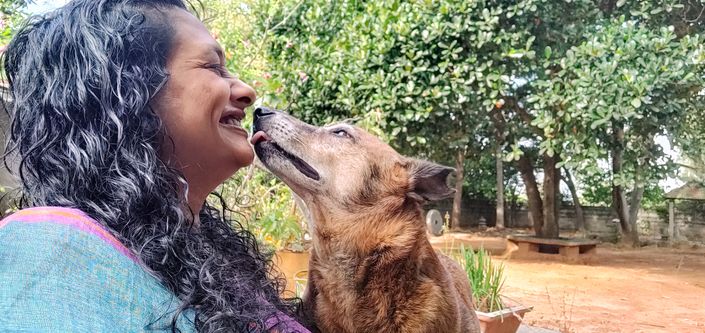The two new flavours of CE 101!
Know more by clicking on the path of your choice below.
Learn more about the Canine Essential 101
Sindhoor Pangal, Director at BHARCS, talking about how the CE 101 is structured
Here's all that we cover in the CE 101:
- What signals do dogs use to communicate and what do they mean?
- How we can communicate with dogs using our body language, gestures, eye contact, facial expression and tone. Our focus is not on what we can train dogs to understand, but what dogs naturally understand and respond to. We use examples of free-living dogs (street dogs) to explore this topic.
- Why should we care about stress in modern loving homes? What causes stress in our pampered pooches? How to recognise stress in dogs? What to do about it?
- Ways to safely approach and handle dogs, without need for muzzles, restraint and training. We only use our body language, gestures, eye contact, facial expression and tone for communication. This is the BHARCS way.
- The dominance myth and the truth about social structure of dogs, as revealed by lives of free-living dogs (street dogs)
- Understanding fear and fear related behaviours in dogs.
- Why, when and how to reassure dogs without crating or training them. We use the BHARCS way of communicating with dogs.
- Impact of punishments and training on dogs.
- Understanding how to draw boundaries without need for yelling, training or restraining. Here again, we only use the BHARCS way of communicating with dogs.
- Ergonomic equipment for dogs, outdoor management & stress-free leash handling. Here again, we rely on the BHARCS way of communicating, that does not need training.
Here's what some of our students have to say:
Meet Sunil, Potter & Weasley
The CE 101, now in 2 new flavours!
You could be a pet parent or a dog behaviour professional...
...choose a path that supports your interest and objective.
Access a range of learning opportunities that work best for you.
Know more by clicking on the path of your choice below.


